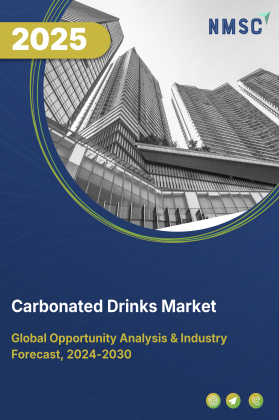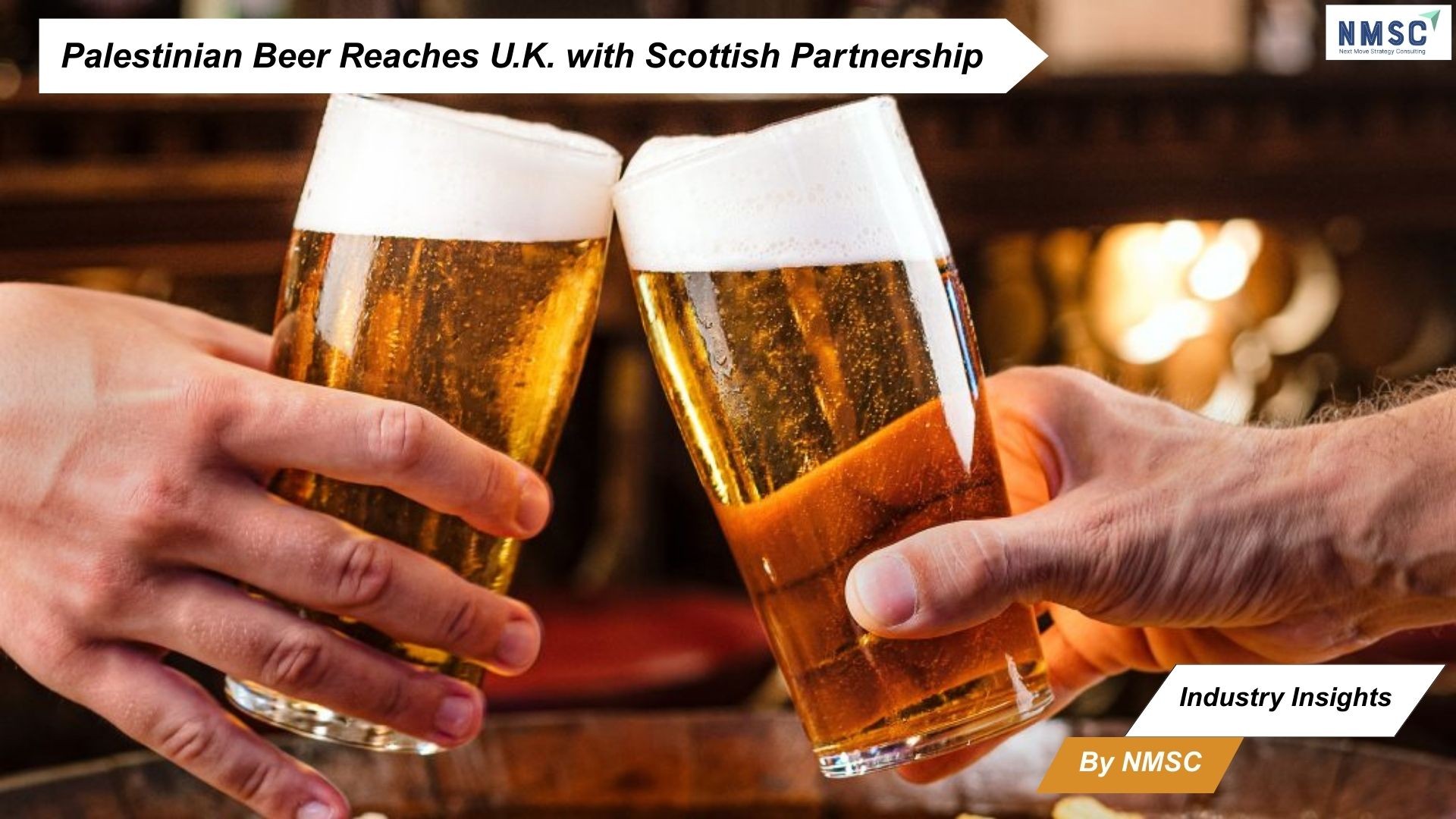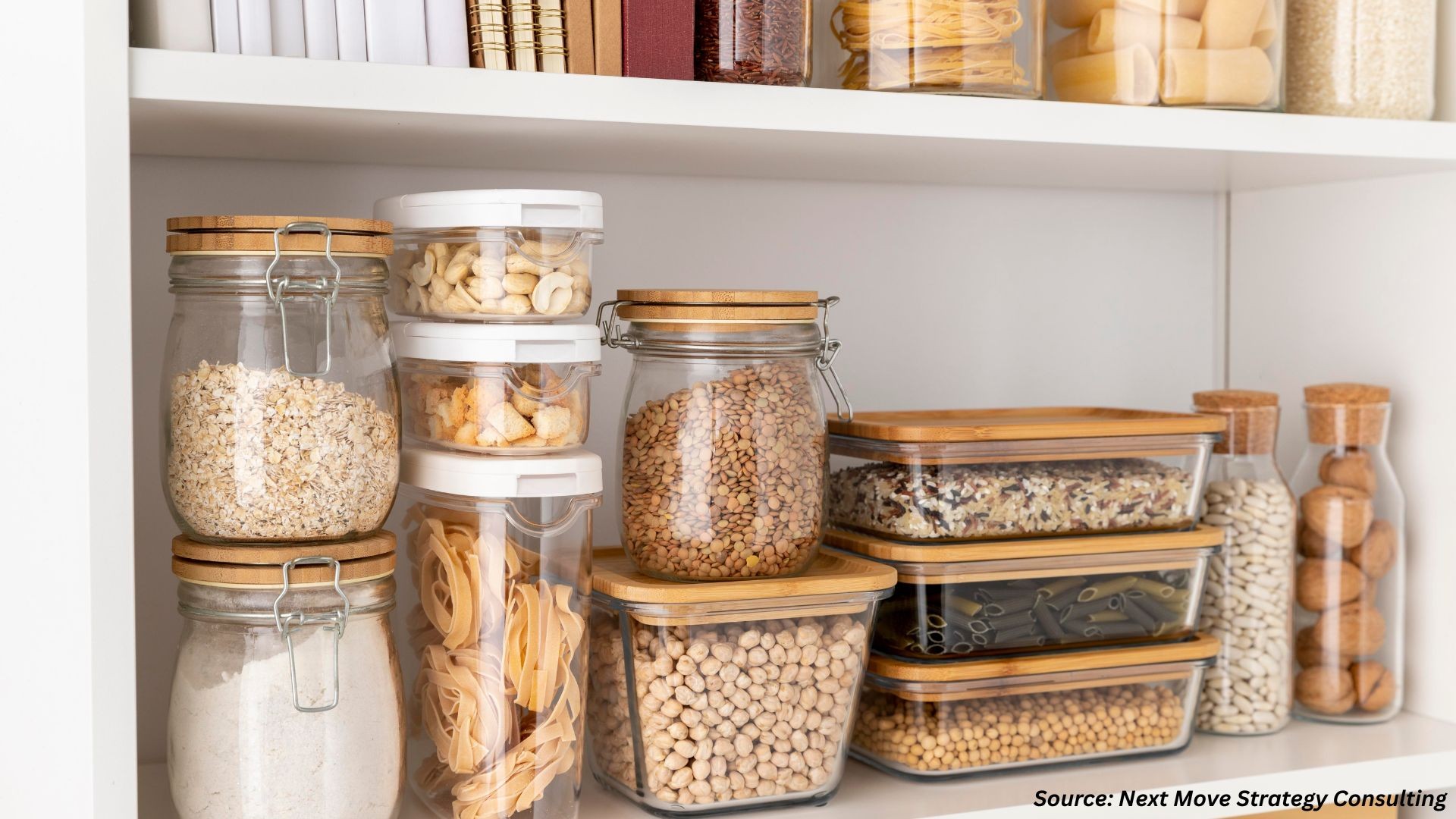
Edible Cannabis Market by Product Type (Food, Baked goods, Beverages, and Others), By Cannabinoid Profile (THC-dominant, CBD-dominant and Others), By Packaging Format (Single-serve, Multi-serve, and Bulk & wholesale packaging), By regulatory status (Licensed, and Unlicensed), By End-User Industry (Medical and therapeutic use, Recreational adult use, Wellness and functional use, and Others) – Global Analysis & Forecast, 2025–2030.
Industry Outlook
The global Edible Cannabis Market size was valued at USD 12.56 billion in 2024, and is expected to be valued at USD 15.03 billion by the end of 2025. The industry is projected to grow, hitting USD 36.83 billion by 2030, with a CAGR of 19.6% between 2025 and 2030.
The edible cannabis market is emerging as one of the fastest-growing segments of the broader cannabis industry, driven by increasing legalization and rising consumer preference for smoke-free alternatives. Products such as gummies, chocolates, baked goods, and beverages dominate the category, offering discreet consumption and longer-lasting effects compared to inhalation. The appeal extends across both recreational and medical users, with CBD-based edibles gaining popularity among wellness-focused consumers seeking relaxation, pain relief, and functional benefits without strong psychoactive effects.
Regulatory frameworks strongly influence the market’s evolution, with strict controls on THC dosage, packaging, and distribution shaping consumer access. Licensed dispensaries remain the primary channel, but online sales and mainstream retailers are expanding in regions where regulations allow. Product innovation, including sugar-free, vegan, and fast-acting formulations, is broadening appeal among diverse consumer groups. While North America leads the market, other regions such as Europe and parts of Asia-Pacific are gradually opening, reflecting a steady global shift toward cannabis acceptance.
What are the Key Trends in the Edible Cannabis Industry?
How is the Edible Cannabis Market Accelerating Fast-Acting Formulations?
The market is seeing a clear technical shift toward fast-acting formulations that shorten onset from hours to minutes, with nano-emulsion technologies routinely reporting onset in the 15-to-30-minute range. This speed changes consumer expectations, making edibles competitive with inhalation for situational use, and it raises new dosing challenges because rapid onset can amplify perceived potency. For companies, this means reformulation is now a product and go-to-market priority, not just a lab experiment. Brands that invest in validated emulsion partners and add clear dosing guidance and educational labelling can capture users who want control and immediacy, while reducing customer confusion and returns. To operationalize this, prioritize trials that measure onset and bioavailability in real-world conditions, and build packaging that communicates time to effect and recommended wait times.
The above chart depicts the steady growth of the global cannabis market size from 2020 to 2025, showing an increase from USD 23.6 billion in 2020 to USD 51.1 billion in 2025. Such robust market expansion reflects rising demand and broader legalization, both of which directly fuel the growth of the edible cannabis segment, as new consumers and product innovations diversify cannabis consumption beyond traditional forms. The surge in market value thus provides greater opportunities for edible cannabis brands to enter, expand, and benefit from shifting consumer preferences towards convenient and discreet product formats.
How is the Edible Cannabis Market Responding to Tighter Packaging and Dosing Rules?
Regulators are increasingly prescribing strict per serving and per package limits and detailed child-resistant packaging rules, and recent federal guidance emphasizes clear limits on milligrams of THC per immediate container. These rules affect formulation, package engineering, and supply chain economics because many popular confectionery formats need repackaging into single-dose or portion-controlled units to comply. From a company perspective, compliance is now a core product design constraint, not an afterthought. Firms should reengineer SKUs to align with the tightest foreseeable jurisdiction limits use tamper-proof and child-safe packaging suppliers, and test packaging at scale to avoid costly recalls. Also consider modular multipack strategies that keep per-unit limits intact while offering consumer value, and document compliance rigorously to smooth entry into regulated dispensaries and mainstream retail.
How is the Edible Cannabis Market Moving into Mainstream Retail and Digital Channels?
Edible cannabis is shifting from niche dispensaries to integrated omnichannel retail experiences as brands and retailers embrace online-to-offline journeys and loyalty-driven digital playbooks, with early reports showing that omnichannel retailers see substantial gains in retention and repeat purchases. That change means purchasing behaviour is becoming more convenience-driven and more price sensitive, and it favours standardized dosing and branded experiences that work in a typical grocery or e-commerce checkout flow. Companies should accelerate digital commerce capabilities, invest in direct-to-consumer experiences where allowed, and optimize assortment and pricing for both digital discovery and basket conversion. Practical steps include building robust product pages that foreground serving size and time to onset, enabling subscription models for consumable wellness lines, and integrating loyalty programs that reward repeat edible purchasers.
What are the Key Market Drivers, Breakthroughs, and Investment Opportunities that will Shape the Edible Cannabis Industry in the Next Decade?
The market is being propelled by evolving consumer preferences toward discreet, smoke-free consumption and growing legalization momentum globally. Advances in formulation technologies, notably nano-emulsions and encapsulations are lowering onset time and improving bioavailability, making edibles more attractive to both new and experienced consumers. At the same time, regulatory complexity, dose inconsistency, and safety concerns remain significant hurdles. Breakthroughs in clean label, portion control packaging, and real-world consumer education offer new pathways. Overall, the market is in a dynamic phase where science, regulation, and consumer trust must align to unlock its full potential.
Growth Drivers:
How will Broader Legalization and Regulatory Acceptance Drive the Edible Cannabis Market Growth?
As more jurisdictions legalize cannabis for medical or recreational use, edible products gain formal access to expanded retail and prescription channels. For instance, Canada legalized edible cannabis in 2019, opening new categories under strict regulatory regimes. Legal markets allow higher consumer confidence, traceability, and legitimate branding, which attract mainstream purchasers. For companies, entering new regulatory markets early with compliant formulations and packaging is essential. They should align R&D and compliance teams to upcoming jurisdictions’ rules to be first movers. Securing licensing, local partnerships, and regulatory expertise becomes a competitive moat in expanding geographies.
Also, the rise in urban population acts as a major driver for the market because urban centers typically exhibit higher consumer purchasing power, greater exposure to global trends, and more progressive attitudes toward new products and lifestyle choices. Urban populations have easier access to regulated markets and specialty retail outlets where edible cannabis is legally sold, and they are more influenced by modern marketing, convenience trends, and wellness-focused products. As urbanization continues, these demographic shifts create larger, more accessible target markets for edible cannabis brands, accelerating adoption and boosting overall market growth.
The chart shows the urban population (in millions) for six countries in 2024. A high concentration of urban residents reflects greater market readiness for innovative consumer products like edible cannabis, as urban centers typically have higher purchasing power, easier access to legalized cannabis, and faster adoption of new trends. As a result, the growing urban population in these countries signals significant potential for rapid expansion and penetration of the market.
How will Advances in Delivery and Formulation Technologies Accelerate Adoption?
Nano emulsion, liposomal encapsulation, and other novel delivery platforms are reducing onset times from 60–90 minutes down to 20–30 minutes or less, narrowing the gap with inhaled routes. Faster-acting edibles can change consumer behaviour, making edibles viable for situational use (e.g., social, evening) instead of just scheduled dosing. Companies should invest in formulation partners or in-house capabilities that enable such fast-acting matrices and validate them under realistic physiological conditions. Clear consumer education and labelling of onset times will help manage expectations and reduce misuse.
Growth Inhibitors:
What is the Key Inhibitor Posed by Dose Inconsistency and Safety Risks?
One of the most persistent challenges in edible cannabis is batch heterogeneity and dose inaccuracy, where users receive variable THC or CBD levels than expected, coupled with the risk of overconsumption. Because edibles are ingested through digestion and metabolism, misjudging the dose can lead to delayed but intense effects and adverse reactions. For companies, quality control systems must include precise quantification, stringent mixing and testing protocols, and robust batch tracking. Mitigating risk through portion-controlled single-serve units, redundancy in testing, and transparent labelling can preserve consumer trust and reduce regulatory backlash.
What Emerging Opportunity Lies in Functional and Wellness Edible Subsegments?
Beyond high-THC recreational edibles, there is rising demand for low dose, wellness-oriented edibles for sleep, relaxation, recovery, driven by wellness trends in food and supplements. Brands and adjacent sectors increasingly cross over, integrating CBD or microdose THC with botanicals, adaptogens, or nootropics. Though data is still nascent, consumer interest in functional food and wellness is growing strongly in adjacent markets. Companies can develop wellness lines that meet food supplement expectations and pursue health channel partnerships. Blending cannabinoids with functional ingredients, while navigating regulation, can yield new categories and expand addressable audiences without competing directly on potency.
Also, the rise in gross disposable income acts as a critical driver for the market because higher disposable income increases consumers' spending capacity on discretionary and lifestyle products, including premium and novel cannabis edibles. With more financial resources, consumers are more willing to explore and purchase higher-quality, diverse, and often more expensive edible cannabis products for recreational and medicinal purposes. This economic uplift supports the market's expansion by boosting demand, enabling product innovation, and encouraging brand development in the growing edible cannabis sector.
How the Edible Cannabis Market Share is Segmented in this Report, and What are the Key Insights from Segmentation Analysis?
By Product Type Insights
Are Gummies Leading the Edible Cannabis Market as Beverages Surge and Food Segments Stay Core?
Based product type, the market is segmented into food, gummies, chocolates, baked goods, confectionery and mints, savoury snacks, beverages, and others.
Gummies, often combined with candies, hold the largest share among product types. The reasons include ease of dosing, flavor variety, discreet consumption, and strong regulatory acceptance. Because the segment offers good margins, many brands have focused on R&D and flavor innovation here. However, Beverages are showing the fastest growth among product types in several forecasts. Innovation like water-soluble cannabinoids improving bioavailability, combined with consumer demand for drinkables and convenience, is fuelling this.
Food-based products remain the cornerstone of edible cannabis offerings. Reports consistently show baked goods, chocolates & candies/confectionery & mints as among the top product types both in terms of current share and in established markets. The stability of this segment stems from consumer familiarity, established manufacturing pipelines, and the ability to mask cannabis flavour. The other segment, which often includes bakery and pastry items, mints, hard candies, etc., is smaller but growing as niche, innovation-driven categories.
By Cannabinoid Profile Insights
How are THC, CBD, Balanced Blends and Emerging Cannabinoids Shaping the Edible Cannabis Market Trends?
Based on cannabinoid profile, the market is segmented into THC-dominant, CBD dominant, THC and CBD balanced, and other cannabinoids and blends.
THC-dominant edibles continue to command the largest share of the market, particularly in fully legalized regions like North America, where consumer demand for psychoactive effects is strong. Health Canada regulations, for example, allow up to 10 mg THC per package in edibles, shaping how companies design products. CBD-dominant products, however, are accelerating globally, especially in Europe and Asia-Pacific, where stricter THC rules limit psychoactive categories. Balanced THC-CBD blends are carving a niche among wellness users seeking milder effects and therapeutic balance. Meanwhile, emerging minor cannabinoids such as CBG and CBN are starting to appear in edibles, though volumes are still small.
The chart illustrates the market share of the market based on cannabinoid type, showing THC dominant products hold the majority at 55%, followed by CBD dominant (25%), THC and CBD balanced (13%), and other cannabinoid blends (7%). The dominance of THC-based edibles highlights consumer preference for psychoactive and recreational effects, while the significant share of CBD products reflects growing demand for wellness and therapeutic benefits. This segmentation supports strong market growth, as brands can target distinct consumer segments with tailored formulations, fueling innovation and expansion within the edible cannabis category.
By Packaging Format Insights
Is Single Serve Packaging Driving the Edible Cannabis Market While Multi Serve and Bulk Formats Expand?
Based on packaging format, the edible cannabis market is segmented into single serve packaging, multi serve packaging, and bulk and wholesale packaging.
Single serve packaging currently leads the market due to convenience, dosage control, and regulatory compliance that often limits THC content per package. For instance, Canada restricts edibles to a maximum of 10 mg THC per package, encouraging single-serve formats. Multi serve packaging, however, is gaining ground among experienced consumers who prefer variety packs or larger portions at lower per-unit costs. Bulk and wholesale packaging is still niche but is expanding in markets with mature regulations and high-volume dispensary distribution. The key insight for producers is to focus on single serve for mainstream growth while gradually scaling multi serve and bulk packs in regions with evolving consumer sophistication and relaxed retail rules.
By Regulatory Status Insights
How Does Regulatory Status Influence the Edible Cannabis Market?
Based on regulatory status, the edible cannabis market is segmented into licensed/regulated and unlicensed/illicit/black market.
Licensed and regulated channels lead the market in regions where cannabis is legalized for medical or recreational use. These channels offer consumer confidence, standardized dosing, safety, and compliance with labelling and packaging requirements. For example, Health Canada mandates strict per-serving THC limits, child-resistant packaging, and clear labelling, which drives consumer trust.
However, unlicensed and black-market products continue to exist, particularly where regulations are restrictive or enforcement is limited. For companies, focusing on licensed channels ensures long-term sustainability, brand legitimacy, and access to mainstream retail, while monitoring illicit markets can help identify unmet consumer needs and opportunities for legal product innovation.
By Distribution Channel Insights
Are Online and Physical Channels Driving the Edible Cannabis Market Demand?
Based on distribution channel, the edible cannabis market is segmented into online retail, physical dispensaries, specialty stores, and supermarkets/hypermarkets.
Physical dispensaries remain the primary channel for cannabis edibles in most legalized markets. They provide consumers with in-person guidance, regulatory compliance, and safe product access. Dispensaries also allow brands to educate first-time users on dosing and effects, which is critical for edibles due to delayed onset times. Specialty stores, on the other hand, are gaining traction by offering curated product lines, unique flavors, and premium or wellness-focused edibles. These stores appeal to consumers seeking differentiation and novel experiences.
In regions permitting recreational sales, supermarkets and hypermarkets are gradually emerging as convenient, high-volume channels. They offer broad reach and consumer familiarity, especially for wellness or low-potency CBD products. Whereas online retail is increasingly important for subscription models, direct-to-consumer engagement, and home delivery, particularly in mature regulatory markets. Digital channels also enable detailed product education, reviews, and personalized recommendations.
By End-User Insights
Who are the Primary Consumers in the Edible Cannabis Market?
The end-user segmentation includes medical and therapeutic use, recreational adult use, wellness and functional use, and others.
The medical and therapeutic use segment includes patients using hemp edibles for conditions such as chronic pain, nausea, or anxiety. Products are often prescribed or recommended under medical supervision, with precise dosing and compliance being critical. Recreational users seek psychoactive effects and social consumption experiences. The recreational adult use segment drives demand for THC-dominant edibles, gummies, chocolates, and beverages with creative flavors. Brands capitalize on this segment by offering variety packs, seasonal editions, and premium or novelty products while ensuring responsible marketing and compliance with local regulations.
Regional Outlook
The market is geographically studied across North America, Europe, the Middle East & Africa, and Asia Pacific, and each region is further studied across countries.
Government Initiatives Supporting Edible Cannabis Market Growth, by Country:
|
Region/Country |
Initiative / Policy |
Focus Area |
|
Germany |
New Cannabis Act |
The reform opens the door for regulated consumption and influences future edible policy debate |
|
South Africa |
Cannabis for Private Purposes Act |
Focused on legalization for private use but restricting edible forms |
|
Canada |
Cannabis Act |
Established a regulated legal framework for edibles, enabling licensed businesse |
Source: Library of Congress, SMARC, Health Canada
Edible Cannabis Market in North America
North America is defined by a mature regulatory and retail transition that favours product innovation, safety controls, and mainstream retail entry. Canada’s national legalization of non-medical cannabis created a regulated edibles category with strict per-package limits and packaging rules that set early global standards and encouraged quality control and product diversification. The United States is a patchwork of state markets that push product innovation, such as fast-acting formulations and beverage formats, while federal prohibition keeps cross-border trade and scale constrained. This combination of national Canadian rules and varied US state rules drives investment in compliant manufacturing, lab testing, and branding.
Edible Cannabis Market in the United States
The United States shows demand-led growth where state-level adult use legalization fuels dispensary distribution, e-commerce, and formulation R&D, even as federal prohibition limits banking and interstate scaling. Public health guidance from the Centers for Disease Control highlights risks of edibles, such as dosing uncertainty and poisoning incidents, which in turn force companies to adopt portion-controlled single-serve packs, explicit labelling, and consumer education. These safety-driven regulations and retail practices accelerate consumer trust and repeat purchase among adult consumers while keeping product innovation concentrated in legal states.
Edible Cannabis Market in Canada
Canada’s federal framework for edible cannabis since 2019 emphasizes consumer protection through strict per-serving and per-package THC limits, child-resistant packaging, and classification guidance that shapes what counts as an edible product. Health Canada’s rules have pushed manufacturers toward single-serve dosing, third-party testing, and clear labeling, which created a high compliance bar and built mainstream consumer confidence in edibles for both medical and recreational use. That regulatory clarity also constrained product formats early on but stimulated innovation in compliant matrices, microdosing, and CBD wellness ranges.
Edible Cannabis Market in Europe
Europe is heterogeneous but shows a clear pattern. Recreational legalization is limited, yet legalization and regulatory clarification for hemp-derived CBD and low THC products have opened a wellness edibles segment. The EMCDDA notes that innovation from legal markets outside Europe is entering the region and prompting new policy responses and monitoring needs. As a result, edible formats that meet strict trace THC limits and novel food or novel ingredient authorisations are favoured, pushing companies to prioritize hemp based CBD edibles, compliant testing and conservative claims to access mainstream European retail.
Edible Cannabis Market in the United Kingdom
The United Kingdom’s edible landscape is shaped by tight control of psychoactive cannabinoids and a strong novel food regime for CBD edibles, with government guidance recommending very low trace limits for controlled cannabinoids in consumer products. Food Safety and Home Office guidance has forced CBD edible sellers toward rigorous testing and novel food submissions, constraining impulsive growth but raising consumer safety standards. This regulatory caution boosts demand for fully compliant low THC or CBD microdose edibles among wellness shoppers while limiting widespread recreational edible commercialization.
Edible Cannabis Market in Germany
Germany’s regulatory change in 2024 introduced a new national approach to cannabis policy that will shape edibles availability and product models across continental Europe. The German Cannabis Act and subsequent debate are accelerating discussion about non-profit models, public health safeguards and controlled retail. As Germany moves toward broader legal frameworks, manufacturers and investors are preparing for standardized potencies, retail roll-outs and stringent quality requirements, making Germany a potential gateway for edible product scale in the EU if regulators permit non-psychoactive and portion-controlled formats.
Edible Cannabis Market in France
France remains cautious but pragmatic. THC remains a controlled narcotic, while CBD and low THC hemp products have been regulated via court rulings and administrative changes that allow CBD products under strict THC ceilings, such as the 0.35% threshold for industrial hemp derivatives. This legal nuance has carved out a regulated CBD edibles and wellness niche while keeping high THC recreational edibles illegal; businesses must therefore focus on trace compliance, hygiene and novel food pathways to sell ingestible CBD items in French retail.
Edible Cannabis Market in Spain
Spain’s edible scene is shaped by a tolerated social club model and decentralized regional controls that create localized experimentation but unclear national commercialization. Cannabis social clubs in regions such as Catalonia have historically limited products to non-commercial member distribution, and recent municipal crackdowns and health orders over illicit edibles highlight enforcement variability. That regulatory ambiguity boosts informal edible availability yet increases public health scrutiny, so firms looking at Spain should prioritise compliance, local partnerships, and cautious roll-outs focused on hemp-derived low THC wellness items.
Edible Cannabis Market in Italy
Italy maintains a dual structure of permitted medical cannabis and constrained recreational rules, with medical channels enabling precise dosing and licensed products while casual recreational edibles remain mostly illicit or informal. This environment pushes licensed producers to concentrate on medicines and therapeutic edible formulations and leaves novelty or recreational edible formats to informal supply chains. Companies eyeing Italy must therefore plan medical partnerships, clinical evidence generation, and careful regulatory navigation to serve patients rather than mass recreational consumers.
Edible Cannabis Market in Asia Pacific
Asia Pacific is deeply heterogeneous. Australia supports regulated medical cannabis with TGA guidance and growing medicinal edible use, while many Asian states keep strict prohibitions that limit edible availability. The TGA’s medicinal cannabis guidance and product lists enable legitimate therapeutic edible formats in Australia, but in countries such as China, Indonesia, and Hong Kong, authorities have taken restrictive stances, including bans on CBD or synthetic cannabinoids. This creates a bifurcated APAC market where medical and hemp wellness niches coexist with large illicit markets in restrictive jurisdictions.
Edible Cannabis Market in China
China maintains strict controls on cannabinoids and, in recent years, has banned many synthetic cannabinoids and tightened controls, citing public health risks; this makes legal edible cannabis markets effectively non-existent and pushes all consumption into illicit channels. China’s regulatory posture and criminal controls mean companies cannot operate a commercial edible market, and any product plans must focus on non-Chinese markets or strictly industrial hemp fibres and exports that meet Chinese chemical thresholds.
Edible Cannabis Market in Japan
Japan retains one of Asia’s strictest prohibitions on cannabis possession, with very limited medical or recreational allowances and severe penalties; CBD products are sold, but THC remains illegal. That combination means edible cannabis beyond trace hemp-derived CBD is not a viable consumer category, and market activity is limited to compliant CBD wellness imports and localized research into medical cannabinoid therapies under tight supervision. Companies should treat Japan as a CBD niche market that demands robust purity testing.
Edible Cannabis Market in India
India’s narcotics framework under the NDPS Act restricts recreational cannabis broadly, while artisanal hemp and traditional uses persist regionally; commercial edible cannabis remains effectively prohibited for psychoactive products. The strong legal constraints push most activity into unregulated markets and informal edible products despite some interest in hemp-derived wellness goods. For commercial players, India currently offers constrained opportunities: focus is on compliant hemp-derived ingredients and careful legal review before any edible product development.
Edible Cannabis Market in South Korea
South Korea enforces strict controls on recreational cannabis but allows tightly regulated medical access in specific cases; the Ministry of Food and Drug Safety and related agencies stress product safety and traceability. Imports and possession of psychoactive cannabis are criminalised, which keeps any edible cannabis market to a minimal footprint, limited to approved medical trials or strictly regulated pharmaceutical routes. Companies interested in the Korean market should prioritise clinical evidence and regulatory engagement rather than consumer edible launches.
Edible Cannabis Market in Taiwan
Taiwan treats cannabis as a serious narcotic with severe penalties for production and distribution and medical uses are tightly restricted, so mainstream edible cannabis products are not available to consumers. The Narcotics Hazard Prevention Act imposes severe punishments for trafficking, limiting any edible market to academic or strictly authorised medicinal pathways. Businesses must therefore consider Taiwan a prohibitive market and orient commercial edible strategies elsewhere unless and until policy shifts significantly.
Edible Cannabis Market in Australia
Australia supports a growing medical cannabis sector with TGA guidance for medicinal products and an active patient access pathway; recreational edibles remain largely illegal. The TGA’s medicinal cannabis hub and product lists enable clinical grade edible formulations and drive demand among patients for standardised dosage formats. This regulatory environment channels commercial edible innovation toward medical and evidence-based wellness products, making Australia an attractive market for companies focused on prescriptions, clinical research and compliant medicinal edible manufacturing.
Edible Cannabis Market in Latin America
Latin America is a patchwork from Uruguay’s state-controlled legal market to Mexico’s complex judicial decriminalization and many countries with nascent medical programmes; these differing regimes produce both regulated edible supply in some places and large informal markets elsewhere. Uruguay’s regulated approach created government channelling and quality control, while Mexico’s uncertain legislative path keeps commercialization constrained. Overall, regional drivers include tourism, reform pressure, and agricultural hemp potential, but regulatory fragmentation means cross-border scaling remains difficult.
Edible Cannabis Market in the Middle East & Africa
The Middle East remains overwhelmingly restrictive due to cultural and legal prohibitions, while parts of Africa are experimenting with medical and industrial hemp frameworks; South Africa’s private use ruling and subsequent legislation has opened limited domestic debate but public health caution persists. UNODC notes that global policy shifts are creating localized reform momentum yet places with strict penalties still drive large illicit markets. Investors must therefore treat Middle East markets as high regulatory risk while watching African reforms for targeted medical and hemp opportunities.
Competitive Landscape
What are the Top Companies in Edible Cannabis Market and How they are Competing Against One Another?
The edible cannabis market is led by several prominent companies that have established strong footholds through strategic initiatives and brand recognition. In the United States, companies like Wyld, Kiva Confections, and Wana Brands have become household names, dominating the edibles category in multiple states. For instance, Wyld leads the edibles category in sales across six Western states, including California and Oregon, with approximately USD 250 million in regulated marijuana product sales since January 2024. These companies compete by offering a diverse range of products, focusing on quality, consistency, and consumer trust. Their success is attributed to effective branding, compliance with state regulations, and a deep understanding of consumer preferences.
Market Dominated by Major Players and Specialists
The edible cannabis market is characterized by a mix of large-scale operators and specialized brands. Major players like Curaleaf, Cresco Labs, and Green Thumb Industries leverage their extensive distribution networks and resources to maintain significant market share. In contrast, niche brands such as Wyld and Kiva Confections focus on product innovation and regional dominance. For example, Wyld has become the top-selling brand in more than half of the adult-use markets analyzed, including states like Arizona and Michigan. This dual approach creates a dynamic competitive landscape where large operators set industry standards, while specialized brands drive innovation and cater to specific consumer segments.
Innovation and Adaptability Drive Market Success
Innovation is a key driver of success in the edible cannabis market. Companies are continually developing new product formats, flavors, and delivery methods to meet evolving consumer demands. For instance, Wyld has expanded its product line to include fast-acting gummies, catering to consumers seeking quicker onset times. Similarly, Kiva Confections offers a range of products infused with terpenes to enhance the consumer experience. These innovations not only differentiate brands in a crowded market but also demonstrate their adaptability to changing consumer preferences and regulatory environments.
Market Players to Opt for Merger & Acquisition Strategies to Expand their Presence
Merger and acquisition (M&A) strategies are increasingly common among edible cannabis companies seeking to expand their market presence and capabilities. For example, OrganiGram Holdings Inc. acquired Motif Labs Ltd. for up to USD 72.5 million, aiming to become Canada's largest cannabis company by market share. In the U.S., Budr, a growing cannabis dispensary company in Connecticut, expanded its operations by acquiring three hybrid retail and medicinal cannabis shops previously owned by The Botanist. These strategic acquisitions allow companies to enhance their product offerings, increase market share, and achieve greater operational efficiencies, thereby strengthening their competitive positions in the market.
List of Key Edible Cannabis Companies
-
Wyld Edibles
-
Kiva Confections
-
Wana Brands
-
1906 New Highs
-
Bhang Nation
-
Mary's Medicinals
-
Plus Products Inc.
-
Sunderstorm Bay Inc,
-
Cann
-
Stiiizy
-
KOI CBD
-
BudPop
-
Garden Society
What are the Latest Key Industry Developments?
-
September 2025 – Wana Brands expanded its reach by introducing hemp-derived THC edibles and beverages in Georgia, marking its 24th state market. This move underscores Wana's strategy to capitalize on the growing acceptance of hemp-derived products across the United States.
-
October 2024 - Kiva Confections unveiled its new Camino Midnight Blueberry gummies, incorporating CBN for enhanced sleep support. This product launch reflects Kiva's focus on innovation and meeting consumer needs for targeted wellness solutions in the cannabis edibles sector.
-
July 2024 – Wyld Edibles, a leading U.S. cannabis brand, launched its product line in New York, marking its entry into the 15th state. This expansion signifies Wyld's commitment to broadening its market presence and catering to the growing demand for cannabis edibles in new regions.
-
July 2024 – 1906 New Highs introduced a line of fast-acting, microdosed edibles, emphasizing their pharmaceutical-grade quality. This development highlights the brand's commitment to providing precise and rapid effects for consumers seeking controlled cannabis experiences.
What are the Key Factors Influencing Investment Analysis & Opportunities in Edible Cannabis Market?
The edible cannabis market is experiencing significant investment activity, driven by increasing consumer demand and expanding legalization. This growth has attracted substantial funding from both private and institutional investors. For instance, German cannabis producer Demecan secured a valuation nearing USD 109.2 million following a funding round led by Florida-based Trog Hawley Capital, marking the first U.S. institutional investment in Demecan.
Investment hotspots are emerging in regions with favorable regulatory environments and high consumer demand. North America, particularly the United States, remains a dominant market due to widespread legalization and a mature consumer base. In Europe, countries like Germany are attracting foreign investments following policy shifts, such as the decriminalization of cannabis possession. Asia-Pacific markets, including India and South Korea, are also gaining attention as they explore cannabis-related opportunities. Investors are focusing on companies with strong brand recognition, innovative product offerings, and compliance with local regulations to capitalize on these growing markets.
Key Benefits for Stakeholders:
Next Move Strategy Consulting (NMSC) presents a comprehensive analysis of the global edible cannabis market, covering historical trends from 2020 through 2024 and offering detailed forecasts through 2030. Our study examines the market at global, regional, and country levels, providing quantitative projections and insights into key growth drivers, challenges, and investment opportunities across all major edible cannabis segments.
The edible cannabis industry creates value for a wide range of stakeholders. Investors benefit from rapid market growth, high-margin product lines, and opportunities for strategic acquisitions or partnerships in emerging and established markets, allowing them to capture long-term returns. Policymakers gain from regulated cannabis frameworks that generate tax revenue, reduce black market activity, and support public health initiatives through standardized labeling and dosage control. Customers, including medical patients and recreational users, enjoy safer, standardized, and innovative edible products that cater to wellness, therapeutic, and recreational needs. Overall, the industry aligns commercial growth with regulatory oversight and consumer safety, creating a balanced ecosystem that fosters innovation, economic value, and public trust.
Report Scope:
|
Parameters |
Details |
|
Market Size in 2025 |
USD 15.03 Billion |
|
Revenue Forecast in 2030 |
USD 36.83 Billion |
|
Growth Rate |
CAGR of 19.6% from 2025 to 2030 |
|
Analysis Period |
2024–2030 |
|
Base Year Considered |
2024 |
|
Forecast Period |
2025–2030 |
|
Market Size Estimation |
Billion (USD) |
|
Growth Factors |
|
|
Countries Covered |
28 |
|
Companies Profiled |
15 |
|
Market Share |
Available for 10 companies |
|
Customization Scope |
Free customization (equivalent up to 80 analyst-working hours) after purchase. Addition or alteration to country, regional & segment scope. |
|
Pricing and Purchase Options |
Avail customized purchase options to meet your exact research needs. |
|
Approach |
In-depth primary and secondary research; proprietary databases; rigorous quality control and validation measures. |
|
Analytical Tools |
Porter's Five Forces, SWOT, value chain, and Harvey ball analysis to assess competitive intensity, stakeholder roles, and relative impact of key factors. |
Key Market Segments
By Product Type
-
Food
-
Gummies
-
Chocolates
-
Baked goods
-
Confectionery and mints
-
Savoury snacks
-
Beverages
-
Others
By Cannabinoid Profile
-
THC dominant
-
CBD dominant
-
THC and CBD balanced
-
Other cannabinoids and blends
By Packaging Format
-
Single serve packaging
-
Multi serve packaging
-
Bulk and wholesale packaging
By Regulatory Status
-
Licensed/regulated
-
Unlicensed/illicit/black market
By Distribution Channel
-
Online Retail
-
Physical Dispensaries
-
Specialty Stores
-
Supermarkets/Hypermarkets
By End-User
-
Medical and therapeutic use
-
Recreational adult use
-
Wellness and functional use
-
Others
Geographical Breakdown
-
North America: U.S., Canada, and Mexico.
-
Europe: U.K., Germany, France, Italy, Spain, Sweden, Denmark, Finland, Netherlands, and rest of Europe.
-
Asia Pacific: China, India, Japan, South Korea, Taiwan, Indonesia, Vietnam, Australia, Philippines, and rest of APAC.
-
Middle East & Africa (MENA): Saudi Arabia, UAE, Egypt, Israel, Turkey, Nigeria, South Africa, and rest of MENA.
-
Latin America: Brazil, Argentina, Chile, Colombia, and rest of LATAM.
Conclusion & Recommendations
Our report equips stakeholders, recyclers, manufacturers, policymakers, investors, and sustainability consultants with actionable intelligence to harness the growing potential of the global market. By combining credible government-backed data, regional insights, and strategic analysis across key growth drivers, from closed-loop production and energy savings to policy innovation and cross-sector collaboration, NMSC’s Edible Cannabis Market Report serves as an indispensable resource for navigating the evolving circular economy landscape and accelerating sustainable edible cannabis recovery efforts worldwide.
The edible cannabis market is poised for robust expansion as legalization spreads, consumer awareness grows, and product innovation accelerates. Strategic takeaways for companies include prioritizing compliance with evolving regulations, diversifying product portfolios across cannabinoids, formats, and dosages, and leveraging multi-channel distribution to reach both medical and recreational users. Investment in innovation, branding, and strategic mergers or acquisitions will be critical to staying competitive. Looking ahead, the market is expected to witness continued consolidation, increased adoption of functional and wellness-oriented edibles, and geographic expansion into emerging regions, creating significant opportunities for companies that can balance regulatory adherence, consumer demand, and operational scalability.





















 Speak to Our Analyst
Speak to Our Analyst

























